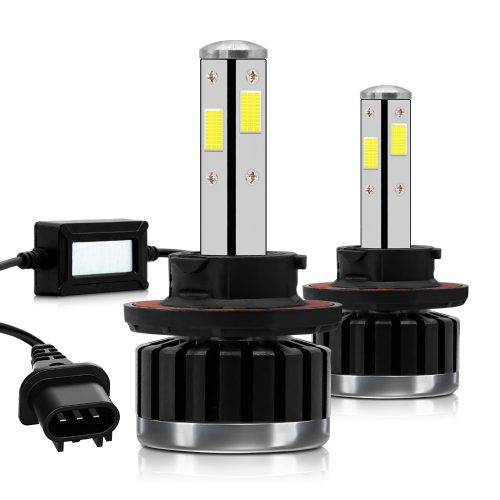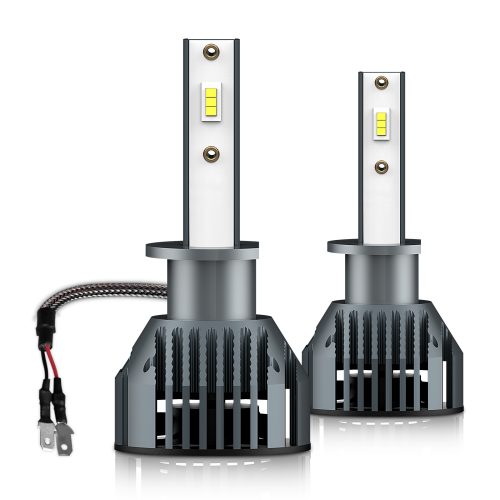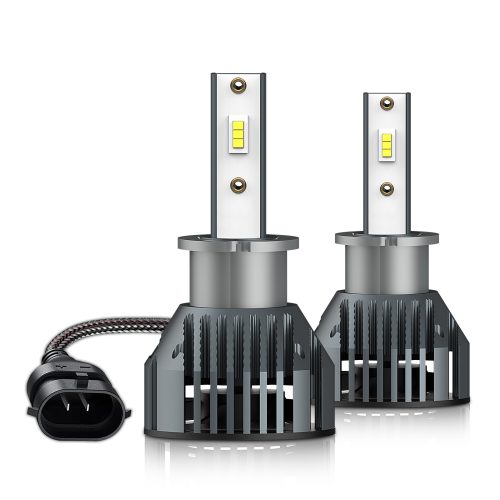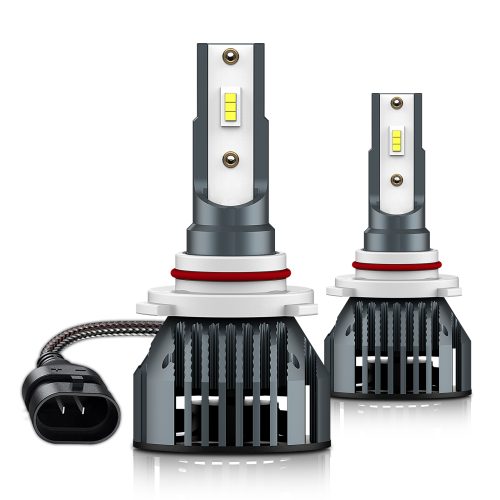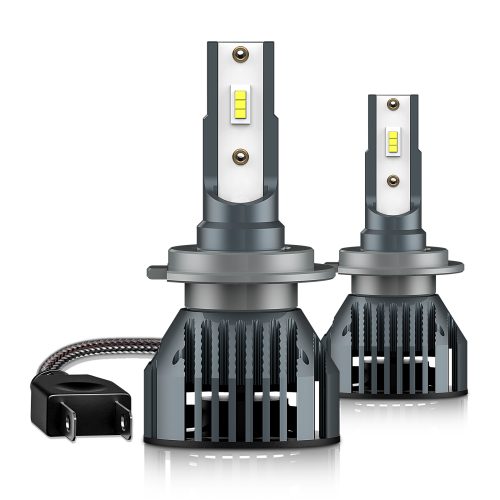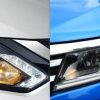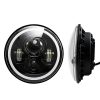The Construction and Emission Principle of LED Vehicle Lights
LED (Light Emitting Diode) is a semiconductor device that emits light when an electric current passes through it. It has become a popular lighting technology in many applications, including vehicle lighting due to its energy efficiency, long lifespan, and compact size. In this article, we will explore the structure and emitting principle of LED vehicle lights.
The core component of an LED is a chip made of p-type and n-type semiconductors, with a transition layer called the PN junction between them. The chip is usually very small and is typically encapsulated in a clean epoxy resin. The chip is connected to the anode and cathode electrodes through gold wires, reflector rings, plastic wires, and cathode wires.
When a forward voltage is applied to the LED, electrons from the n-type semiconductor and holes from the p-type semiconductor are injected into the PN junction. These minority carriers recombine with majority carriers, and the excess energy is released in the form of light, converting electrical energy into light energy. However, when a reverse voltage is applied to the PN junction, the injection of minority carriers is inhibited, and the LED does not emit light.
The process of LED emitting includes three main steps: carrier injection under forward bias, recombination radiation, and light energy transmission. As electrons and holes recombine in the PN junction, they release energy in the form of photons, which are the basic units of light. The energy of photons corresponds to the bandgap of the semiconductor material, with higher energy photons corresponding to shorter wavelengths and higher frequencies of light. For example, blue and violet light carry the most energy, while orange and red light carry the least energy. Different materials with different bandgaps can emit light of different colors.
When an LED is in forward bias (i.e., a positive voltage is applied to the anode and a negative voltage to the cathode), a current flows from the anode to the cathode, and the semiconductor crystal emits light of different colors ranging from ultraviolet to infrared. The intensity of the emitted light is proportional to the current flowing through the LED. To put it simply, the LED can be compared to a hamburger, where the emitting material is the “meat patty” in the middle, and the top and bottom electrodes are the bread that sandwiches the meat. Through research and development of different emitting materials, various colors of LEDs with higher efficiency have been developed over time. However, the basic emitting principle and structure of LED have remained largely unchanged.
LEDs used in vehicle lights are typically packaged in a way that protects them from environmental factors such as moisture, dust, and vibration. The encapsulation with epoxy resin ensures the durability and reliability of the LED in harsh conditions commonly encountered in vehicle applications.
In addition to their energy efficiency and long lifespan, LED vehicle lights also offer other advantages over traditional incandescent or halogen lights. For example, LEDs can be easily controlled to produce different colors and brightness levels, making them suitable for various lighting applications in vehicles, such as headlights, taillights, turn signals, and interior lighting. LED vehicle lights also have a faster response time, providing better visibility and safety on the road.
Bottom Line
In conclusion, LED vehicle lights are constructed using a chip made of p-type and n-type semiconductors, with a PN junction that allows for the emission of light when a forward voltage is applied. The emitting process involves carrier injection, recombination radiation, and light energy transmission. The energy of the emitted light is determined by the bandgap of the semiconductor material, which determines the color of the light. LED vehicle lights have revolutionized the automotive lighting industry with their energy efficiency, long lifespan, compact size, and versatility in producing different colors and brightness levels.

